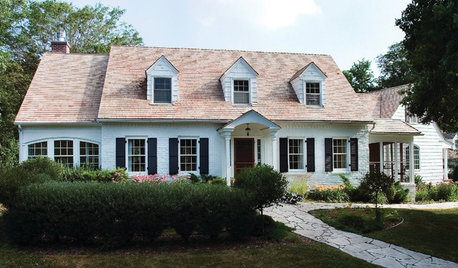Double digging and roots
tishtoshnm Zone 6/NM
12 years ago
Related Stories

GARDENING GUIDESGarden Myths to Debunk as You Dig This Fall and Rest Over Winter
Termites hate wood mulch, don’t amend soil for trees, avoid gravel in planters — and more nuggets of garden wisdom
Full Story
ROOTS OF STYLERoots of Style: The Indelible Charm of American Tudors
Rich details and an intimate scale give this English-inspired architectural style memorable character and flexibilty
Full Story
TRADITIONAL ARCHITECTURERoots of Style: Georgian Homes Offer Familiarity Through the Ages
Americans have been embracing this interpretation of classical architecture since the 1700s. Does your home show off any Georgian details?
Full Story
HOUSEPLANTSDig These Decorative Planters
Houseplants deserve a well-designed home too, and these modern planters let them put roots down in style
Full Story0

MORE ROOMSInspiring Double-Height Living Spaces
Lofty Rooms Bring Light and Connection to a Home's Design
Full Story
HOME OFFICESRoom of the Day: Digging Emerald in a Chic Atlanta Office
Green accents tickle a mom and her toddler pink in this office and playspace insired by high fashion
Full Story
REMODELING GUIDESRegional Modern: Metro New York Shows Its Modernist Roots
10 contemporary homes outside Manhattan: Clean lines, rooted in place
Full Story
REMODELING GUIDESHow to Dig Down for Extra Living Space
No room for a ground-level addition? See if a finished basement is a good idea for you
Full Story
BASEMENTSRoom of the Day: Family Digs In for a Chic New Kitchen and Dining Area
When a homeowner needs to free up kitchen space for her home bakery business, the only way to go is down
Full Story
GARDENING GUIDESThe Beauty of Bare-Root Plants
Plant dormant trees and shrubs in fall using the easy, affordable bare-root method and enjoy beautiful results in spring
Full StorySponsored
Columbus Area's Luxury Design Build Firm | 17x Best of Houzz Winner!
More Discussions






wayne_5 zone 6a Central Indiana
bi11me
Related Professionals
Pottstown Landscape Contractors · Bridgeport Landscape Contractors · Broadlands Landscape Contractors · Crystal Landscape Contractors · Framingham Landscape Contractors · Kettering Landscape Contractors · North Potomac Landscape Contractors · Paso Robles Landscape Contractors · San Rafael Landscape Contractors · The Woodlands Landscape Contractors · Tigard Landscape Contractors · Gastonia Decks, Patios & Outdoor Enclosures · Palm Beach Gardens Decks, Patios & Outdoor Enclosures · San Antonio Decks, Patios & Outdoor Enclosures · Santa Monica Decks, Patios & Outdoor EnclosuresKimmsr
tishtoshnm Zone 6/NMOriginal Author
bi11me
tishtoshnm Zone 6/NMOriginal Author
novascapes
chickencoupe
tishtoshnm Zone 6/NMOriginal Author
patrick1969
RpR_
chickencoupe
floral_uk z.8/9 SW UK
kimmq